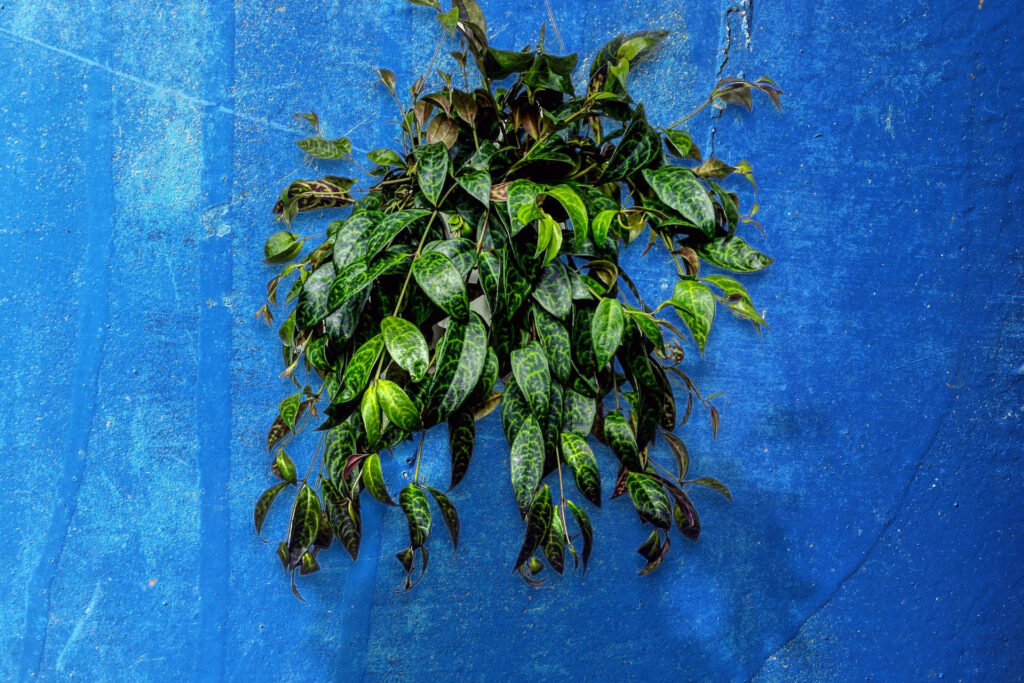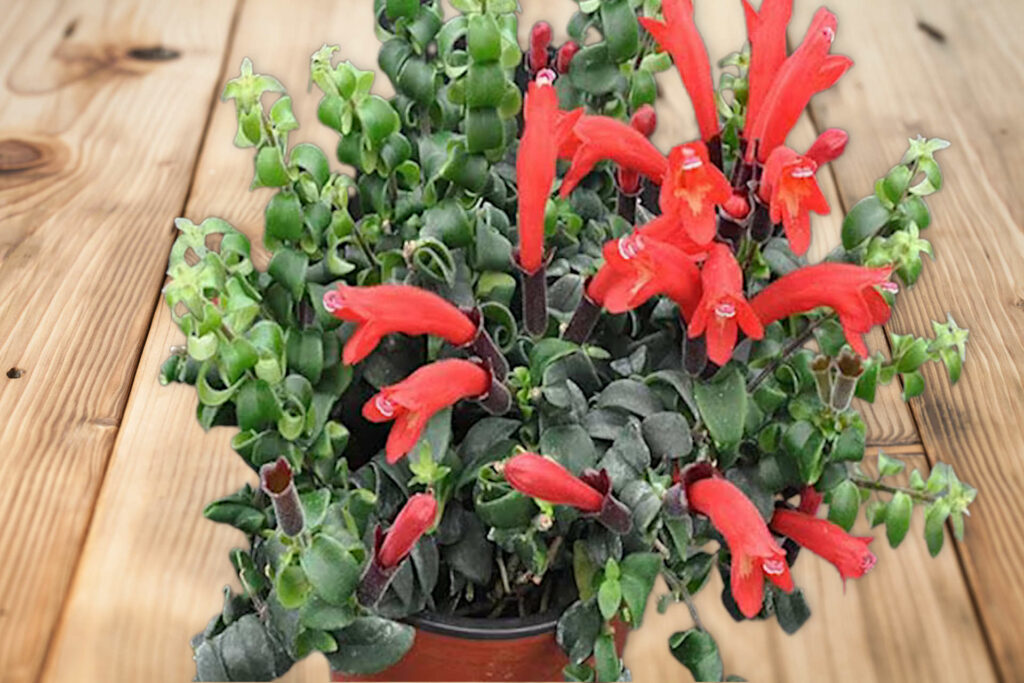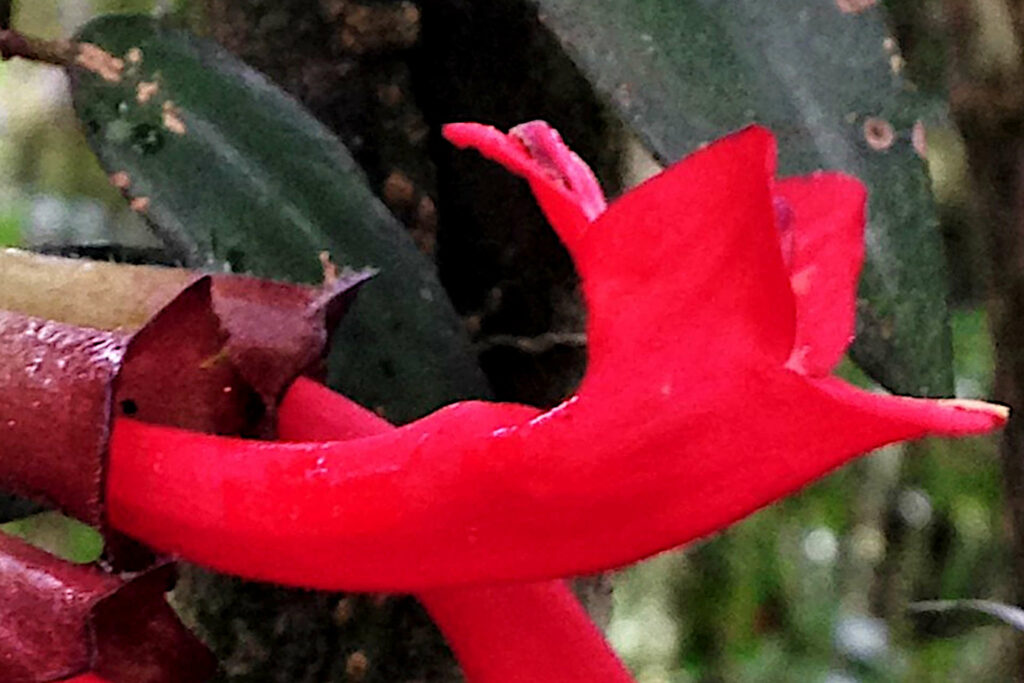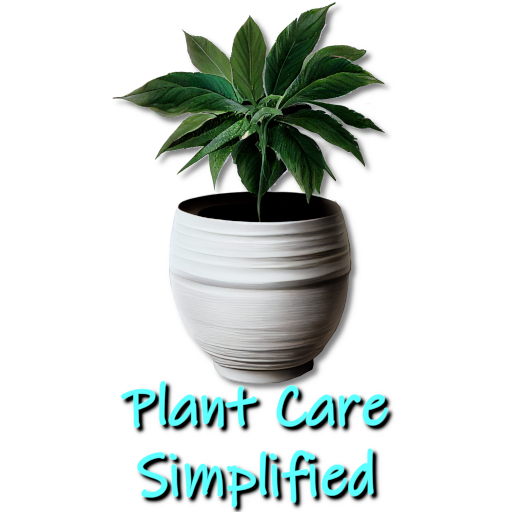What Is the Average Lifespan of A Lipstick Plant?
Kim is passionate about helping people create beautiful, healthy indoor spaces that are filled with plants. Kim believes that plants make us happier, healthier human...
How long will my Lipstick plant last is one of the most common questions that we are asked relating to the species? In short, the average lifespan of a Lipstick plant is between 5-8 years, occasionally longer. However, there are a large number of factors that can affect an individual plant's lifespan.
Below we will look at the various factors that affect the average lifespan of a Lipstick plant and find out how genetics and different varieties can determine the plant's longevity. In addition, we will show you how you can extend a Lipstick plant's lifespan with proper care and deal with the factors that can influence it.
The Life Cycle of The Lipstick Plant

Lipstick plants (Aeschynanthus) are native to the humid rainforests of Southeast Asia and are members of the Gesneriaceae family but have become a common houseplant. Their popularity as tropical houseplants stems from the fact that they can produce beautiful, tubular flowers, red, pink, and orange (depending on the variety), that resemble lipstick tubes. Some varieties of Lipstick plants, such as Black Pagoda, are rare and can be expensive, so lifespan is important.
The life cycle of a lipstick plant includes germination, growth stages, flowering, and reproduction and propagation. During germination, the seeds sprout and begin to grow. As the plant matures, it will go through various growth stages until it reaches maturity and begins to flower. Lipstick plants typically bloom in the summer and fall, producing clusters of brightly colored flowers.
After a Lipstick plant flowers, the plant can reproduce through seed production or vegetative propagation. Vegetative propagation involves taking stem cuttings or dividing the plant to create new plants. Gardeners often prefer this method as it allows for faster and more reliable propagation of a Lipstick plant.
Factors influencing the lifespan of a lipstick plant

There are several factors that can influence the lifespan of a lipstick plant. These include environmental conditions such as temperature and humidity requirements, light exposure and intensity, and soil composition and drainage.
Lipstick plants prefer warm temperatures between 70-80°F (21-27°C) and high humidity levels. They also require bright, indirect light to thrive. Soil composition is also important, as these plants prefer well-draining soil that is rich in organic matter.
Care and maintenance practices for a Lipstick plant, such as watering and fertilization, pruning and grooming, and pest and disease management, can also play a role in the longevity of a lipstick plant. Lipstick plants prefer to be kept evenly moist but not waterlogged. Overwatering can lead to root rot, which can be fatal to the plant. Fertilization is also important to promote healthy growth and flowering.
Pruning and grooming a Lipstick plant can help maintain the shape and appearance of your lipstick plant. Regularly removing dead or yellowing leaves and spent flowers can help promote new growth. Pest and disease management is also important to keep your plant healthy. Common pests that can affect lipstick plants include spider mites, mealybugs, and aphids.
The Average Lifespan of A Lipstick Plant

The average lifespan of a lipstick plant can vary depending on species and cultivar. Research and scientific studies have shown that with proper care and environmental conditions, some species of lipstick plants can live for several years. The common lifespan range observed in cultivation is between 5-10 years.
However, it is important to note that individual plants may have shorter or longer lifespans depending on their specific growing conditions and care practices. Some factors that can affect the longevity of a lipstick plant include genetic factors, stressors such as extreme temperatures or pest infestations, or improper care practices such as overwatering or neglect.
Genetic Factors that Affect the Lifespan of A Lipstick Plant
Genetic factors can play a role in the lifespan of a lipstick plant. Some varieties may be naturally more resistant to pests or diseases or may have longer lifespans due to their genetic makeup.
For example, certain cultivars may have been bred for their resistance to common pests or diseases, which can help increase their overall lifespan. Additionally, some varieties may have naturally longer lifespans due to their genetic traits.
Which Lipstick Plant Varieties Have the Longest Lifespans?
The lifespan of a lipstick plant can vary depending on the specific variety or cultivar. Some varieties may have longer lifespans due to their genetic makeup or their ability to resist pests or diseases.
The variety of lipstick plants with the longest lifespan is the Aeschynanthus radicans. This variety can live for up to 10 years with proper care. Other varieties of lipstick plants, such as the Aeschynanthus speciosus and the Aeschynanthus ciliatus, can live for 5-8 years with proper care, while Aeschynanthus pulcher reaches full growth after 2-5 years1 and can live as long as 10 years.
It is important to research the specific variety of lipstick plant you are interested in to learn more about its average lifespan and care requirements.
Tips for Increasing the Lifespan of A Lipstick Plant

To increase the lifespan of your lipstick plant, it is important to provide proper environmental conditions such as adequate light, temperature, and humidity. Ensuring that your plant receives bright, indirect light and is kept in a warm location with high humidity levels can help promote healthy growth.
Adequate care and maintenance, such as regular watering and fertilization, pruning and grooming, and pest and disease management, can also help prolong the life of your plant. Regular inspections and proactive measures such as checking for pests or signs of disease can help catch any issues early on before they become major problems.
Key Takeaway: Average Lifespan of a Lipstick Plant
In conclusion, understanding the average lifespan of a lipstick plant can be helpful for plant enthusiasts looking to care for their plants properly. With proper care and environmental conditions, lipstick plants can provide beauty and enjoyment for several years.
Final Thoughts on the Average Lifespan of a Lipstick Plant
The average lifespan of a lipstick plant can vary depending on several factors, including environmental conditions, care and maintenance practices, and genetic factors. Providing the proper environmental conditions, such as adequate light, temperature, and humidity, as well as proper care and maintenance practices, like regular watering and fertilization, can help increase the lifespan of your plant.
It is also important to consider the specific variety or cultivar of lipstick plant you are growing, as some may have longer lifespans due to their genetic makeup or resistance to pests or diseases. By understanding these factors and providing the proper care, you can help maximize the lifespan of your lipstick plant.
FAQs about the Lifespan of Lipstick Plants
Q: How often should I water my lipstick plant?
A: Lipstick plants prefer to be kept evenly moist but not waterlogged. Watering frequency will depend on factors such as temperature, humidity, pot size, soil composition, etc. It is best to check the soil moisture regularly by sticking your finger into the soil up to your first knuckle; if it feels dry at that depth, then it’s time to water your plant.
Q: What are some signs of an unhealthy lipstick plant?
A: Some signs of an unhealthy lipstick plant include yellowing or wilting leaves; stunted growth; lack of flowering; blackened stems or roots; moldy soil; etc. These issues can be caused by factors such as improper watering or fertilization; pest or disease problems; inadequate light or temperature conditions; etc.
Q: Can lipstick plants survive outdoors?
A: Lipstick plants are native to tropical regions and prefer warm temperatures and high humidity. They may be able to survive outdoors in areas with similar climates but may struggle in colder or drier regions. If you live in an area with cold winters, it is best to bring your lipstick plant indoors during the colder months.
Q: What are the most common diseases that affect lipstick plants?
A: Some common diseases that can affect lipstick plants include root rot, leaf spot, or powdery mildew. These diseases can be caused by factors such as overwatering, poor air circulation, or high humidity levels. It is important to monitor your plant regularly for signs of disease and take appropriate action if necessary.
Q: Can lipstick plants be propagated to extend their lifespan?
A: Yes! Lipstick plants can be propagated through stem cuttings or division to create new plants. This can help extend the overall lifespan of your plant collection. Propagation is a great way to share your plants with friends and family or to expand your own collection.
References
- Royal Horticultural Society: Aeschynanthus pulcher
- Plant Care Simplified: Difference Between Aeschynanthus Pulcher and Aeschynanthus Radican
Kim is passionate about helping people create beautiful, healthy indoor spaces that are filled with plants. Kim believes that plants make us happier, healthier human beings, and she loves sharing her knowledge with others so they can experience the joys of plant care for themselves. <a href="https://plantcaresimplified.com/kim-marson/">Read more</a>
More Posts